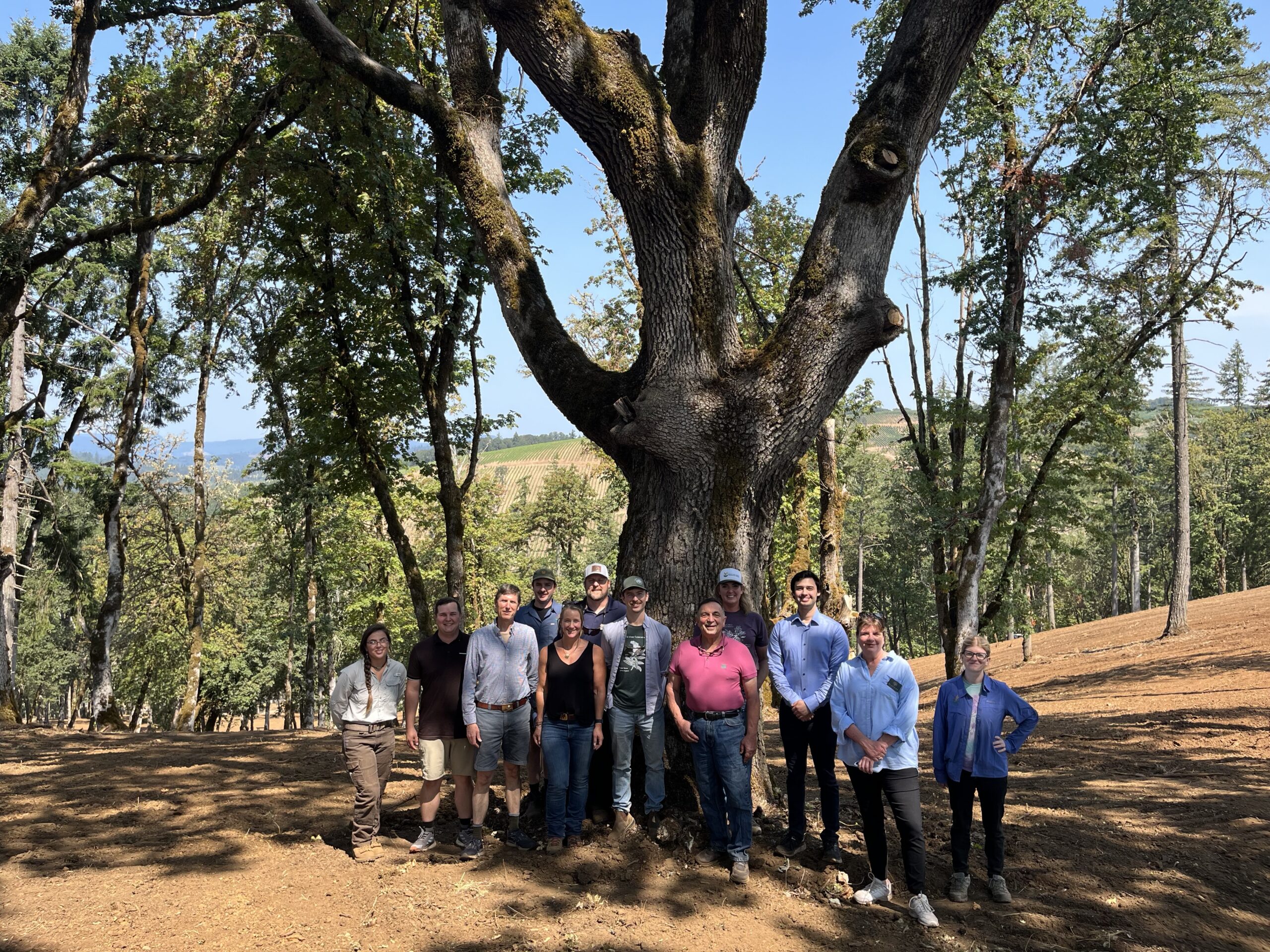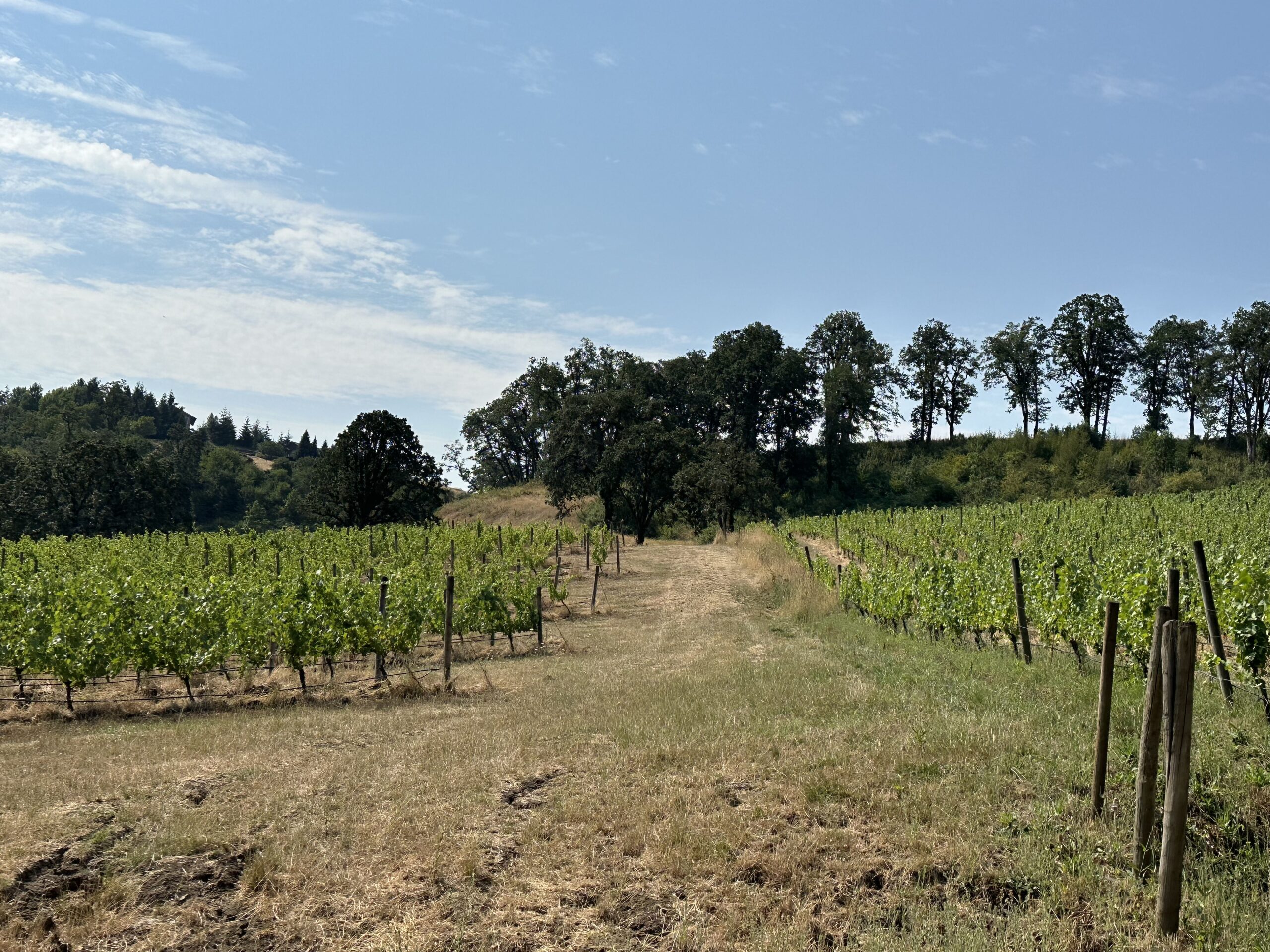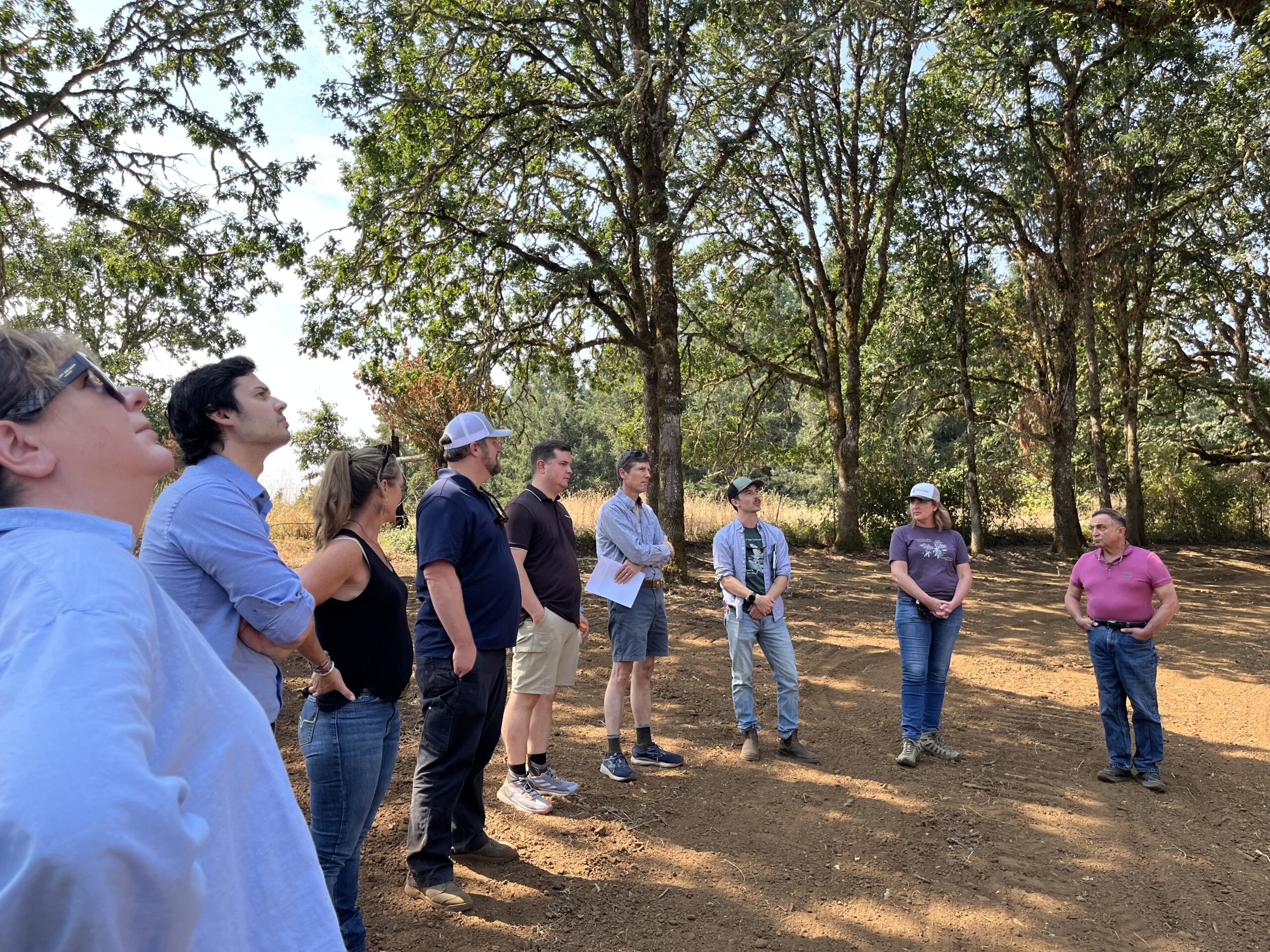This post was originally published on the Yamhill Soil and Water Conservation District's website. You can find the post here.

The Yamhill Valley
300 years ago, if you took a hike through the Yamhill Valley, you’d be walking through wet meadows, open prairies, and oak savannas. Oak savanna is a unique ecosystem in our area, historically managed by the Indigenous people living in the valley. Indigenous people used regular, prescribed fire, to open up oak forests and allow grasslands and prairies to thrive between openly distributed, broad-canopied old-growth Oregon white oak trees.
These ecosystems have all but disappeared, with only 5-10% now remaining. Today, farms and towns cover most of the valley, and fires aren’t common so close to people’s homes and livelihoods. Conserving and restoring oak savanna requires conservation specialists to take every opportunity possible.

Oaks & Vineyards
One such opportunity in our area has been to work in collaboration with vineyards and wineries. They have become a staple of the valley’s agricultural community and contribute significantly to the region’s economy. A new partnership in Yamhill County between Pheasants Forever, Pacific Birds, the Yamhill Soil & Water Conservation District, and the Natural Resources Conservation Service is helping to fill much-needed capacity gaps in strategic locations and accelerate on-the-ground conservation of oak and prairie habitat across western Oregon.
Recently, partners from each organization came together to tour local vineyards in Yamhill County and learn more about how they are working to protect and conserve oaks. Vineyards are often planted on upland hillsides along the valley rim, where much of the intact oak savanna exists. Many vineyards have recognized the value of protecting and restoring native habitats and have been valuable partners in working to conserve oaks.

Creative Land Management
Fire was historically used to manage the rapid growth of native understory shrubs, grasses, and forbs, but now, the combination of reduced disturbance and introduced, noxious, invasive plants have contributed to the choking up of historically open oak habitats. Without active management, plants like Himalayan blackberry and English hawthorn can spread rapidly, grow many feet tall, and completely block access to the forest floor by people and wildlife. To address this, oak restoration specialists often use specialized mowing practices in combination with herbicides that target invasives and limit the drift or lingering of chemical particles that might harm other organisms.
Many vineyards in the Yamhill Soil & Water Conservation District use organic and biodynamic methods for growing grapes and do not use any chemical herbicides. This has forced them to get creative – and many of our partners have been remarkably innovative.
For example, Maysara Vineyards has laboriously and mechanically removed invasive plants and frequently tills and disturbs the top layer of soil. This is often at great expense and done over multiple years in order to give native plant species a fighting chance. Other vineyards like Antica Terra use prescribed grazing methods with specialized breeds of sheep and pigs, where they limit the animals to a smaller fenced-in area, allowing them to eat nearly all the plants in the plot. They can move the plot however often they feel is necessary and place it intentionally to target invasive plants. The Kunekune pigs provide another potential benefit to the vineyard – they eat voles and other burrowing animals that can cause problems in vineyards!

Restoration
While it can be a lot of work to restore and maintain an oak savanna, it can also be incredibly rewarding. In restored oak habitats, wildlife like acorn woodpeckers, western gray squirrels, white-breasted nuthatches, Fender’s blue butterflies, osprey, and bald eagles can thrive. Oak savannas have naturally low-growing vegetation under the oaks’ high canopy, so they present a lower fire risk than overgrown blackberry. And, of course, oak savannas are beautiful landscapes that are popular for hiking and birdwatching.
Restoring and maintaining oak savannas is a monumental task, but one that is well worth the effort. We are grateful for the many partners we have in these endeavors, especially our friends in the wine industry who continue to innovate and dedicate their efforts towards conserving oaks and supporting quality, natural habitats!
